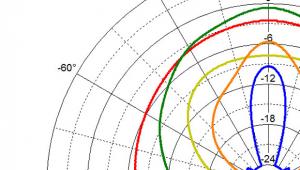Review: JayBird BlueBuds X headphone Page 2
Measurements
To measure the performance of the BlueBudsX, I used a G.R.A.S. Type RA0045 ear simulator, a Clio FW audio analyzer, and a laptop computer running TrueRTA software with an M-Audio MobilePre USB audio interface. Measurements were calibrated to ear entrance point (EEP), the point where your ear canal meets your pinna. Measurements were done with the medium silicon tips because these fit the ear simulator best. I inserted and reinserted each earpiece several times, and settled on a position for each that gave the most representative result. Note that because these are Bluetooth-only headphones, I couldn't do many of my usual measurements, including impedance, sensitivity, and distortion. Not also that the latency inherent in Bluetooth required me to set a time window for the measurement, which makes the measurement much less consistent. The curves you see here are the most typical of the responses I got after a dozen or so tries with each earpiece.
The frequency response of the BlueBudsX is a little unusual. The broad boost in the bass and gradual treble roll-off are typical; what's unusual is the lack of a large boost at about 3 kHz. A typical IEM might have a +5 to +10 dB peak in this region, but with the BlueBudsX it's only about +2 dB. I might expect this characteristic to make the headphone sound dull, but it certainly didn't to our panelists.
Isolation is outstanding even for an IEM: -15 to -25 dB at lower frequencies, dropping to a maximum attenuation of -45 dB between 3 and 4 kHz. This is the best isolation I can remember measuring from an IEM. Either the tips just fit the ear simulator really well, or there's something about the design that helps block outside noise.
Bottom Line
I can't describe the BlueBuds X any better than Will did when he said, "This could be the perfect Bluetooth headset." It sounds great and it barely feels like it's there. What more could you want in a sports headphone?
- Log in or register to post comments




































































